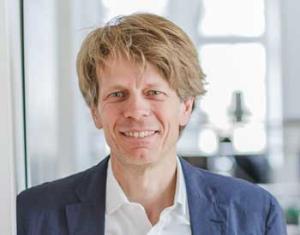Keynote Lectures
 Jan Knippers, Prof. Dr. Ing.
Jan Knippers, Prof. Dr. Ing.
- Partner and co-founder of Knippers Helbig Advanced Engineering; Head of Institute for Building Structures and Structural Design (itke) University of Stuttgart
- Email: info@itke.uni-stuttgart.de
- Keynote Lecture: Fibres Rethought - Towards Novel Constructional Articulation
Jan Knippers specialises in complex parametrical generated structures for roofs and façades, as well as the use of innovative materials such as glass-fibre reinforced polymers. Since 2000, Jan Knippers is Head of the Institute for Building Structures and Structural Design (itke) at the Faculty for Architecture and Urban Design at the University of Stuttgart and involved in many research projects on fiber based materials and biomimetics in architecture. He is also partner and co-founder of Knippers Helbig Advanced Engineering with offices in Stuttgart, New York City (since 2009), and Berlin (since 2014). The focus of their work is on efficient structural design for international and architecturally demanding projects. Jan Knippers completed his studies of civil engineering at the Technical University of Berlin in 1992 with the award of a PhD.
Keynote Lecture: Fibres Rethought - Towards Novel Constructional Articulation
The use of new materials in architecture generally follows a set pattern. Initially, they are employed as a replacement for existing materials. This is followed by an experimental phase in which appropriate forms of construction are explored and eventually standardized. Often, the most striking forms are created at the intermediate stage, when no fixed design convention exist and before innovation becomes convention. Applying these insights to composite fibre materials one could say that we are still very much in the initial phase today, even though these materials are in use since more than fifty years. Beginning with the ICD/ITKE research pavilion 2012 a series of demonstrator structures was launched with the idea of presenting novel computational fabrication processes suitable for applications in architecture. These research pavilions as well as the biomimetic concepts behind them will be presented in the lecture.









